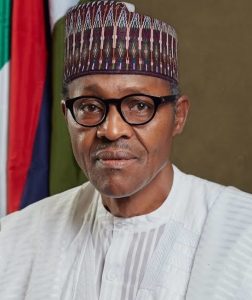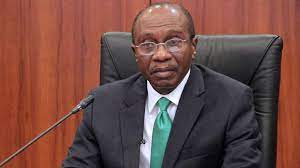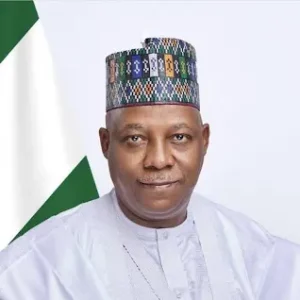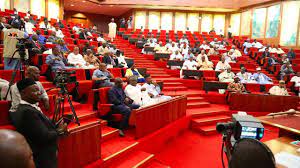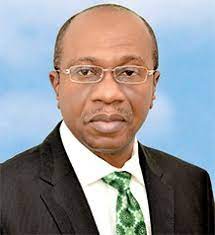
Against all odds, Nigeria’s economy emerged from last year with a somewhat impressive quantitative fact sheet. The value of production output expanded by 3.4 per cent in real terms, pushing the country’s real Gross Domestic Product (GDP) to N73.38 trillion (about $177 billion). That was the second time in the life of President Muhammadu Buhari’s administration the country’s output would grow faster than the population. The growth rate is also the highest since 2014 – eight years ago – necessitating some interrogation.
Understandably, the growth leveraged the low poor performance in the comparative year (2020), underlining the role of the negative base effect. The country had emerged from the 2020 recession that plunged the economy by -1.92 per cent at the end of the year. This makes the allusion to the broken window fallacy a relevant thought in last year’s growth data analysis. Yet, the steepness of the rise may have also suggested that the country has fully emerged from the deep hole it slumped to and has made a modest effort to advance upward.
Also, 2021 has been the most fascinating post-recession year in recent times. The growth pattern of the 2016 post-recession era was different; the economy slipped -1.58 per cent in the recession year, only to gain a marginal 0.82 per cent in 2017. In 2019, three years after the recession that was triggered by the crisis in the oil market, the growth (2.27 per cent) was much flatter than what was recorded last year.
A 3.4 per cent annualised GDP growth ordinarily should take the country a notch higher in its quest for economic development. In principle, economic growth and development are closely compatible but not near identical. So, its impressiveness notwithstanding, the 2021 growth unearths the stark reality of data that are, at best, only useful for analysis and academic purposes.
Beyond its deficiency in qualitative terms, a challenge that is fundamentally associated with quantitative performance parameters such as GDP and gross national product (GNP), last year’s output is a far cry of the country’s growth potential, which many experts put at eight per cent. Nigeria, research works have suggested, must necessarily grow above its potential threshold to create the volume of jobs required to reduce the frightening unemployment rate, which NBS data put at 33.3 per cent.
The last time Nigeria came close to eight per cent growth was 2014 when it achieved 6.22 per cent. Since then, the economy has buckled under anaemic and low performance, achieving a growth rate that is largely below the 2.6 per cent population growth. By implication, a larger number of the citizens have been chasing increasingly fewer goods and services. And if the rate of growth of the country’s population increases as some experts have projected, the divergence between economic performance and population growth will continue, compromising the prospect of achieving economic prosperity.
Many economic variables such as GDP are backwards-looking when taken in isolation, which means they could be deceptive. This means it may be misleading to think that the economic outlook is brightly relying on past data. But direction and magnitude of data are profound in projecting into the future. This makes the quarter-on-quarter behaviour of last year’s economy, as acknowledged by Bismarck Rewane, an economist, relevant to understanding the future sustainability of the growth trajectory.
The data, even in their nominal form, relates more to a retreating or muted growth. The economy exited the COVID-19 triggered recession in the fourth quarter (Q4) of 2020 with an extremely minimal positive growth (0.11 per cent). It consolidated in the first quarter (Q1) of 2021 at 0.51 per cent and leapt the following quarter (Q2) with the GDP growth hitting exceeding five per cent, the highest quarterly growth in recent years. As a section of the society grimaced at the real value of the then much-celebrated growth considering that the comparative quarter (Q2 2020) was almost non-existent as a result of global lockdown, the performance was accepted for what it was – economic growth. That cruel reality brought to memory the unfortunate fallacy of using GDP to measure economic performance.
Thereafter, the growth trend started flattening, assuming the pattern of a forward-skewed table. The country recorded 4.01 per cent in the third quarter (Q3), showing that the growth momentum was, indeed, beginning to lose its hold. Analysis of the Q4 data, which were released last week, even shows a slower growth – average performance of 3.98 per cent in real GDP.
The sluggishness of the growth is most visible in the performance of crude, which posted a negative full-year growth of 8.3 per cent. Production, which has been challenged by theft and other geopolitical forces, fell to a daily average production volume of 1.5 million barrels in Q4. That turned out to be the worst level in over a decade
While the negative growth in the oil sector is cancelling out, from -12.65 per cent and -10.73 per cent in Q2 and Q3 up to -8.06 per cent in Q4, the bullish outlook of the non-oil sectors, especially the real sector, is waning fast. For instance, manufacturing, which grew at an average of 3.7 per cent in the first three quarters of the year slowed to 2.28 per cent in Q4. The sector closed the year at an average growth of 3.35 per cent, which was below the composite GDP. In 2020, the sector contracted by 2.75 per cent, showing that there was a hole going into last year.
In Africa and elsewhere, manufacturing is taken as the pulse of an economy, driving growth in services and external sectors. Whenever manufacturing sneezes, cold soon spreads across the entire economy, including the labour market. As challenging as the country’s manufacturing has been, it accounts for, at least, 12 per cent of the formal jobs. These speak to the importance of the sector. Yet, the sector’s performance is consistently below the average. It is bad that its last year’s performance was low, perhaps, worse than it is still losing more of its steam, reflecting the downtrend data.
Also, agriculture output was up from average growth of 1.6 per cent in the three first quarters of the year to 3.56 per cent in the last quarter. Rewane, as his peers did, attributed the above-average growth in the sector at the twilight of the year to seasonal impact.
The last quarter was mostly a harvest period; that suggests that the momentum of the year-end performance was a blip and may only happen again during the next harvest. The sector, which contributes 26 per cent to the GDP and employs about 70 per cent of Nigerians, grew at a paltry 2.13 per cent. To many economists, the poor performance of the sectors suggests how low the productivity level of the majority of Nigerians is.
Interestingly, agriculture and manufacturing are central to the Central bank of Nigeria (CBN)’s series of interventions. As of November last year, the CBN said it has disbursed N864 billion to 4.1 million farmers through its flagship agriculture Anchor Borrowers’ Programme (ABP).
Other high labour factor utilisation sectors such as real estate and construction such as real estate and construction continue to falter. In Q4, real estate, for one, could not replicate its impressive 3.85 per cent 2.32 per cent growth recorded in Q2 and Q3 respectively in Q4 but slowed to 1.47 per cent, closing at 2.26 per cent annualised growth.
A similar pattern plays out in the data on the construction sector, which also lags behind the average full-year growth at 3.09 per cent. Rising from -7.68 per cent yearly growth in 2020, the sector started last year with quarter-on-quarter growth of 1.42 per cent and jumped to 3.7 per cent and 4.1 per cent in Q2 and Q3 respectively just to retreat to 3.46 per cent in Q4, when activities in the sector (as in the case of real estate) were supposed to spike.
Overall, both Q4 and full-year performances were driven by impressive growth in the service sector. Financial institutions, trade and telecommunication posted growth ranging from 7.28 and 10.53 per cent.
The shared input of the three sectors was 31.1 per cent or N22.83 trillion. The entire service sector of the economy contributed 53.56 per cent while the agriculture and industrial sectors added 25.88 per cent and 20.56 per cent respectively.
Bismarck said the strength of the growth was more important than the figure in assessing the performance of the economy. He said it was commendable to know that the rate of growth was higher than the average growth of the country’s population. The Federal Government targets 4.2 per cent growth this year – an optimistic view of shades of projections about the country, including those of the World Bank and the International Monetary Fund (IMF).
If the country hits the bull’s eye, it will be the first time in a long while the economy would grow much faster than population back-to-back, an indication of growing prosperity and recoiling misery. But with the growth chart trending down the slope, it is progressively uncertain the target will be attainable

